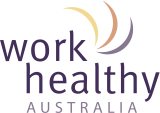
Understanding the risks associated with work demands is a critical part of any organisation’s health and safety strategy. Comcare recently released a guidance document that outlines the risks posed by excessive workloads and other factors, as well as potential strategies for managing those risks. Here are five takeaways from Comcare’s Work Demands Guidance to help you get started.
Work demands are among the most common sources of workplace stress and psychological harm. They may include role overload, unrealistic time pressures, ambiguity or conflict, cognitive and emotional demands of the job, conflict arising from tasks or relationships, change management, a lack of organisational justice, or a worker’s sense of fairness at work.
1 – Consult with workers to identify risks
Consultation is a key element of establishing a safe workplace. Floor walks with your onsite healthcare provider can help with this process. Observing how workers perform their tasks will help in identifying risks and engage workers with occupational health and safety. Risks can develop from both high work demands (excessive workloads, shift work, time pressures, lack of breaks) and low demands (repetitive monotonous tasks, insufficient work). Consultation with workers is an ongoing process that can include floor walks but also observations from onsite health treatments.
2 – Identify the skills workers need to do the work
A task analysis is a comprehensive breakdown of the different activities that are required to complete a task in the workplace. It can assist in identifying the physical, psychological and postural requirements of a job, the tasks frequency and duration, and environmental observations. Taking the time to identify the skills and capabilities workers need to do the work can support pre-employment screening, inform induction and training programs and create a comprehensive approach to safety management.
3 – Put systems and procedures in place that enable safe work
Comcare advises organisations to implement a structured early intervention program that supports workers to recover and return to work. Deploying an onsite injury prevention and management program delivered by expert healthcare providers who partner with the business can drive a positive safety culture and reduce the severity and duration of injuries. By improving workplace health and safety with , employers can also increase employee morale, productivity, and retention, while also reducing workers’ compensation costs and liability risks.
4 – Analyse issues and review the data
It is important to analyse workplace health and safety issues and injury data to identify trends and uncover hidden issues, enabling necessary measures to minimise or eliminate these risks. Combined with worker consultation and your onsite provider expertise, your workplace OHS data can be a rich source of information to aid in minimising risks and yielding solutions. Ultimately, the analysis of workplace health and safety issues and injury data is crucial for creating a safe, healthy, and productive work environment for employees.
5 – Monitor workloads
Excessive workloads and time pressures can leave workers feeling overwhelmed and increase the risk of injury. Conversely, low work demands such as repetitive and monotonous tasks can lead workers to feeling disengaged and also contribute to health and safety issues. Shift work, excessive overtime, workplace conflict and other factors can lead to fatigue and sleep issues. There are several ways to approach this, including equipping your managers with appropriate training that can help them support their staff.
When work demand issues are not effectively managed workers are far more likely to experience work-related stress. Extreme or long-lasting stress is harmful and can lead to serious illness or injury to workers at work.
Comcare’s Managing Work Demands is a resource for employers and managers. Managing workplace demands is an ongoing process that requires the engagement of employers, managers, workers and your healthcare provider working together.
Sign up to our monthly enewsletter
"*" indicates required fields
